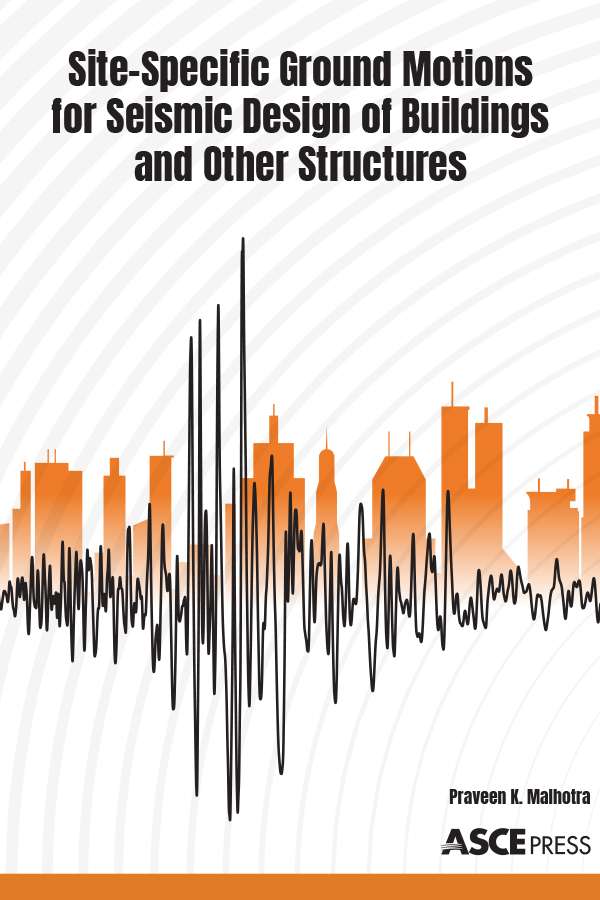New ASCE Press Book Aids Stakeholders in Understanding Seismic Ground Motion

Reston, Va. –When the ground shakes, as a result of earthquakes, structural inertia prevents buildings from moving in unison with the ground. To extend the life of structures, engineers need to plan for potential ground motions during the design phase. This information is provided by seismologists who predict earthquakes, but do not understand the effect of ground motions on structures. Whereas engineers use the predictions, but often do not understand the limitations of ground motion prediction.
A new ASCE Press book, Site-Specific Ground Motions for Seismic Design of Buildings and Other Structures hopes to bridge this gap. Author Praveen K. Malhotra provides a step-by-step approach to properly conduct site-specific Ground Motion Hazard Analysis (GMHA) and Site Response Analysis (SRA), and the resources available.
The book references several standards to provide a comprehensive approach to generate ground motions for design, including:
- General Procedure (GP) in ASCE 7 and its limitations,
- Ground motions for the evaluation and retrofit of buildings (ASCE 41),
- Ground motions for the design of LNG tanks (ACI 376 and API 620 & 625),
- Ground motions for the design of bridges (AASHTO and Caltrans), and
- Ground motions for the performance-based design of tall buildings (PEER TBI).
This book will appeal to geotechnical and structural engineers who need ground motion parameters for liquefaction analyses and seismic design of structures. It will also be highly useful to seismologists, geologists, educators, students, and building code officials.
To purchase online, visit the ASCE Bookstore
Limited review copies are available for book reviews. Please contact Leslie Connelly, [email protected].
ABOUT THE AMERICAN SOCIETY OF CIVIL ENGINEERS
Founded in 1852, the American Society of Civil Engineers represents more than 150,000 civil engineers worldwide and is America’s oldest national engineering society. ASCE works to raise awareness of the need to maintain and modernize the nation’s infrastructure using sustainable and resilient practices, advocates for increasing and optimizing investment in infrastructure, and improve engineering knowledge and competency.


